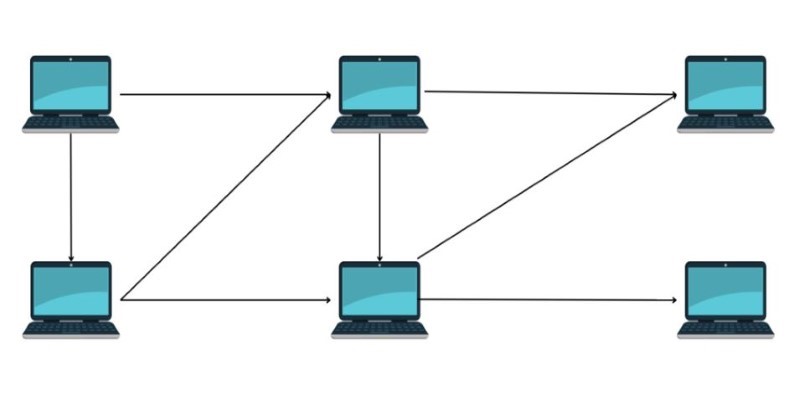Powered by chatbots, virtual assistants, and customer care tools, conversational artificial intelligence is changing human interactions with technology. However, creating successful AI-driven dialogues does present difficulties. Problems with accuracy, user experience, and flexibility could cause annoying interactions that lower faith in artificial intelligence. Overcoming these challenges will help developers produce consistent, human-like AI replies.
Three primary difficulties in conversational artificial intelligence, maintaining accuracy, improving user involvement, and guaranteeing adaptability, are discussed in this guide. It also offers useful ideas to enable creators of more successful artificial intelligence models to create. Dealing with these problems can help engineers enhance AI interactions, making them smoother, more natural, and more user-friendly. Creating artificial intelligence that satisfies user expectations and promotes trust depends on an awareness of these difficulties. Now, explore the challenges and their solutions.

The Role of AI in Human Communication
Conversational artificial intelligence (AI) replaces human speech to help companies automate customer service and improve user engagement. It can give advice, help with chores, and answer queries. However, good AI communication transcends simple responses to questions. One must grasp context, emotions, and user purpose to generate significant interactions. AI should resemble human conversational patterns if it is to feel natural. It calls for understanding several tones, managing several subjects, and adjusting answers instantly.
Without these skills, AI interactions become robotic, repetitious, and irritating. If answers seem odd or pointless, users could lose faith. Developers need constant improvement in AI models to raise engagement and accuracy. One can help by teaching artificial intelligence various linguistic patterns, improving response variance, and applying sentiment analysis. Ongoing development allows artificial intelligence to produce more dynamic, human-like dialogues with better flow. In many fields, a well-developed artificial intelligence system guarantees more efficient communication and increases customer happiness.
Tackling the Biggest Challenges in Conversational AI
Developing artificial intelligence that interacts, understands, and safeguards consumers is challenging. To create AI people can trust, developers must tackle fundamental problems such as intent recognition, natural communications, and data security.
Understanding User Intent Accurately
Accurately deciphering human intent is one of conversational artificial intelligence's toughest problems. People converse in various ways using slang, mistakes, or incomplete sentences, making it challenging for artificial intelligence to understand their meaning. Different users may ask related queries that result in different AI answers. Furthermore, confusing artificial intelligence is obscure or ambiguous, particularly without a real-world background. If artificial intelligence struggles to properly understand purpose, it could give false or pointless responses, upsetting consumers and eroding system confidence.
How to Overcome It?
Use NLP, teach AI on varied datasets with slang, add context awareness for past encounters, and enhance error handling to request user clarification when needed. These improvements give more accurate responses and enable artificial intelligence to grasp intention better.
Maintaining Consistent and Human-Like Conversations
While many chatbots sound robotic and impersonal, artificial intelligence should include consumers in a way that seems natural. Although users want interactions replicating human speech patterns, artificial intelligence sometimes finds keeping context throughout protracted exchanges difficult. Conversations become less interesting if responses seem forced or repetitious. Lack of emotional intelligence adds another difficulty, resulting in stiff and detached AI responses from human emotions. AI could misread user intent or lose track of earlier interactions without appropriate contextual awareness. Developers must hone AI to produce varied, context-aware, and emotionally intelligent responses to offer a more human-like experience.
How to Overcome It?
Train AI models using many human interactions, perform sentiment analysis, and improve response variety to go beyond this. Enhance AI memory by enhancing context retention to guarantee more natural and significant interactions. Regular testing, user comments, and fine-tuning enable artificial intelligence to grasp purpose, prevent repetition, and enhance general conversational flow.

Ensuring Privacy and Data Security
Conversational artificial intelligence gathers and analyzes user data, so privacy and security are important. Personal data stored by artificial intelligence systems might be used improperly or cause data leaks if not well guarded. Sensitive user data is in danger of cybersecurity risks; hence, trust is a major problem. Furthermore, a lack of openness in artificial intelligence decision-making might generate ethical questions and leave consumers unsure about data handling practices. Artificial intelligence (AI) must follow strong data security policies, ensuring compliance with privacy regulations and maintaining confidence through effective security measures safeguarding user data.
How to Overcome It?
To safeguard user data, apply rigorous access limits, end-to-end encryption, GDPR, and CCPA compliance. Let consumers easily control and erase their data to guarantee openness and uphold confidence in artificial intelligence systems.
Overcoming Bias in AI Responses
An important issue influencing justice and user confidence in AI responses is bias in them. Although artificial intelligence learns from data, it may respond unfairly or inaccurately if the training data includes biases. Discrimination, false information, or bad user experiences can follow from this. Building trust depends on ensuring artificial intelligence is inclusive. Developers teach artificial intelligence on varied and balanced datasets if they are to overcome prejudice. Including contributions from several cultures, languages, and points of view promotes more equitable reactions.
Tools for bias identification and regular audits help to spot biased trends in artificial intelligence outputs. Transparency is crucial since consumers should know how artificial intelligence decides. Artificial intelligence should always be learning and changing to give answers. Developers have to change the models to eradicate prejudice and enhance inclusivity. Prioritizing justice will help AI present more ethical, objective interactions, improving the user experience.
Conclusion:
Though problems like intent recognition, natural answers, and data security exist, conversational artificial intelligence is changing user interactions. Developers must improve AI models through rigorous security policies, sentiment analysis, and natural language processing. Ensuring fairness and inclusion depends on addressing prejudice as well. Businesses may create confidence and improve customer experience by always raising AI capabilities. A built artificial intelligence system should feel natural, grasp context, and guard user data. Giving these factors top priority will produce more human-like, dependable, and interesting AI, guaranteeing smooth communication and long-term user happiness.





